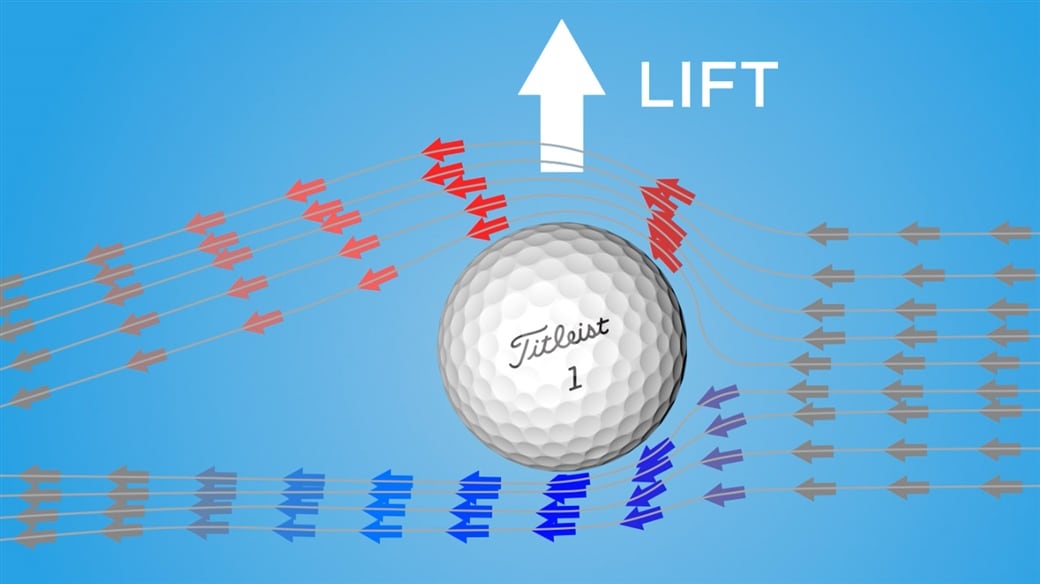
If you've ever played golf on higher altitude courses like ones in Denver, Jackson Hole or Reno, you probably noticed that you were seeing some added distance to your game. And if you wanted to know the how and the why your golf ball seems to fly so far at high altitudes, we've got the answers.
We called on one of our experts, Steven Aoyama, who is a Principal Scientist here in Titleist Golf Ball R&D to shed some light on this topic. Steve has conducted extensive research on the effects of altitude, temperature and humidity on golf ball performance and he was kind enough to share some findings with us.
 Steve Aoyama
Steve Aoyama
Golf Ball Flight at Altitude: Main Takeaways:
- The golf ball flies further in high altitudes mainly due to the change in air density, which decreases as elevation increases. Thinner air exerts less drag force on the ball. The ball moves more easily through the air and doesn't slow down as quickly as it flies, resulting in greater distance.
- The force of gravity also decreases the further we move away from the earth's center, but the change in force is too small to have any significant effect on the ball.
- You can calculate the distance gain you will experience (compared to sea level) by multiplying the elevation (in feet) by .00116. For example, if you're playing in Reno, at 1 mile elevation (5,280 ft.) the increase is about 6% (5,280 x .00116 = 6.1248). If you normally drive the ball 250 yards at sea level, you will likely drive it 265 yards in Reno.
- The golf ball does not spin any less at high elevation. However, because the air is less dense and imparts less force on the ball, the lift force is also lower. You'll see a flatter trajectory on your longer shots, a more shallow angle of descent and greater roll.
- Because the air is less dense at higher altitudes and imparts less force on the golf ball, the ball won't slice or hook as much. It will be harder to shape shots.
- The shorter the shot and the slower a ball moves through the air, the altitude will have a lesser effect on golf ball aerodynamics. This means, on short approaches and greenside shots, you don't have to adjust for elevation.
• • •
To learn more about golf ball aerodynamics, check out our video above — Learning to Fly: Dimples and Golf Ball Design.
• • •
Golf Ball Science: How Does Altitude Affect Golf Balls?
It is commonly believed that golf balls fly farther at higher elevations, and there is a good reason for that: it's generally true. Various explanations for this have been asserted over the years, usually related to thin air or reduced gravity.
The notion of reduced gravity at higher elevations is technically true, because the strength of gravity decreases with increased distance from the center of the Earth. When playing golf in Denver, for example, we are about a mile farther from the center of the Earth than we are when playing in Los Angeles. However, that results in only a tiny reduction in gravity. Even on the top of Mount Everest the gravity is only reduced by about 1/4 of one percent. There are greater variations (around 1/2 percent) due to factors such as latitude or local variations in the Earth's makeup, and nobody worries about that.
Air density, on the other hand, can make a difference that is worth consideration. At higher elevations, the air is less dense ("thinner"). A golf ball (or an airplane, or a car, or anything else for that matter) has an easier time pushing through it. Thus, it doesn't slow down as quickly as it flies, resulting in greater distance. Since golf shots vary widely in their launch conditions (the initial speed, spin rate, and launch angle of the ball), the effect will vary greatly depending on the golfer and what club is being used.
However, as a starting point, one can estimate the percentage distance increase (compared to sea level) by multiplying the elevation (in feet) by .00116. For example, at 5,000 ft elevation the increase is about 5,000 x .00116 = 5.8%. Thus, a golfer who drives the ball 250 yards in LA might see an increase of 14.5 yards (5.8% of 250) when playing in Denver (264.5 yards). The percent increase will be less for players with slower swing speeds and/or when hitting a shorter shot. But on a mid to long approach shot, that could still make a one club difference. Not to mention that you'll be about a club closer to the green as a result of the longer drive.

Golf Ball Spin at High Altitudes
It is also sometimes said that the ball spins less at higher elevations. This is false. The amount of spin generated on a given shot is the result of a complicated physical interaction among the club's properties, the ball's properties, and the golfer's swing properties. These aren't going to be directly affected by elevation.
On the other hand, it's easy to see why many golfers believe that the ball spins less. Since the air is less dense at high altitudes, the spin has less effect on the ball's flight. The ball's spin generates a lifting force (like the wings of an airplane) as it moves through the air. The thinner the air, the smaller the lifting force. Thus, at higher elevations the trajectory is less influenced by lift, and thus has a "flatter" shape and a more glancing impact with the ground. This produces extra roll, which contributes to the increased distance but also makes it harder to hold the green, even though the spin is the same.
The Effect of Altitude on Hooking and Slicing
Hooking and slicing are reduced in severity due to altitude’s effect on the golf ball. A hook or slice is generated when the ball's spin axis is tilted and the lifting force pulls a little to the left or right (as a result of the golfer imparting some amount of sidespin to the ball) instead of straight up. Thus, instead of just holding the ball up against gravity, the lifting force also pulls to the side, creating the curved trajectory. If the lifting force is less due to lower air density, then the curvature will also be less. At 5,000 ft elevation, the air density is about 14% lower than at sea level, so the lifting force is also about 14% less and the hook or slice will curve about 14% less. It's easier to hit the ball straight, but it's harder to intentionally curve it.

Short Shots at High Altitude
Everything stated above becomes less important as shots get shorter. The shorter the shot, the slower it's moving through the air, and the less effect is felt from anything aerodynamic. Thus, on short approaches and especially on greenside shots, elevation is not something to worry about since it will not impact the golf ball’s distance.
Thank for the insight, Steve!
• • •
Editor's Note: This article originally appeared on March 2, 2017.
#TeamTitleist